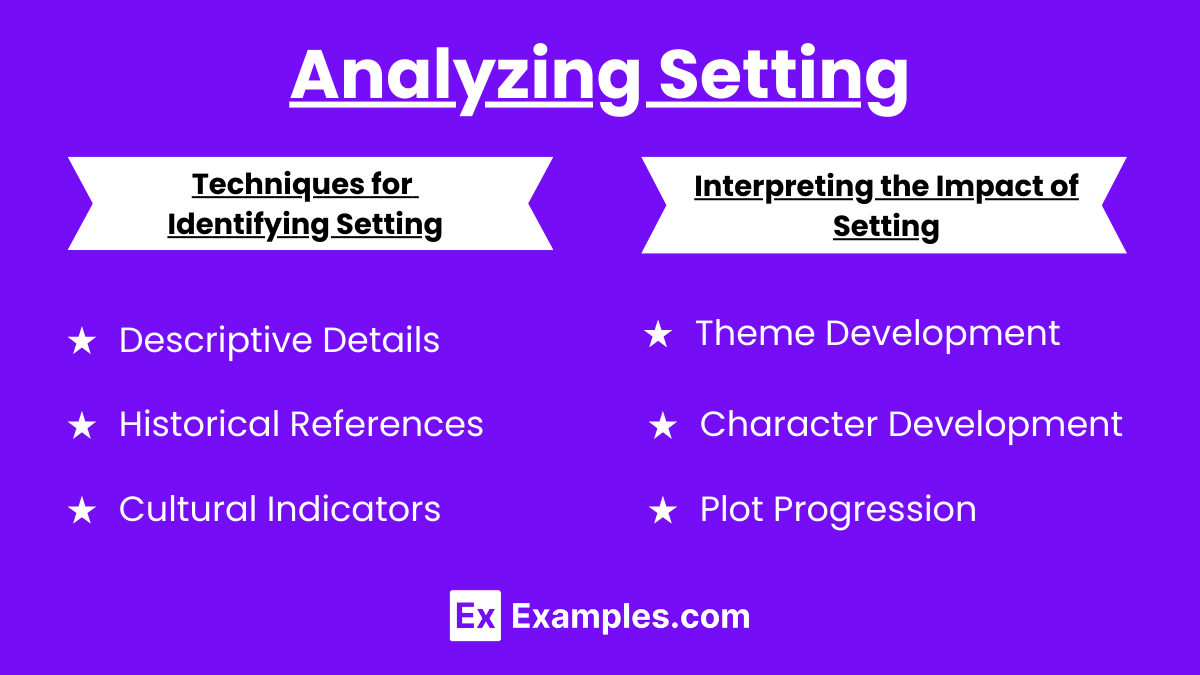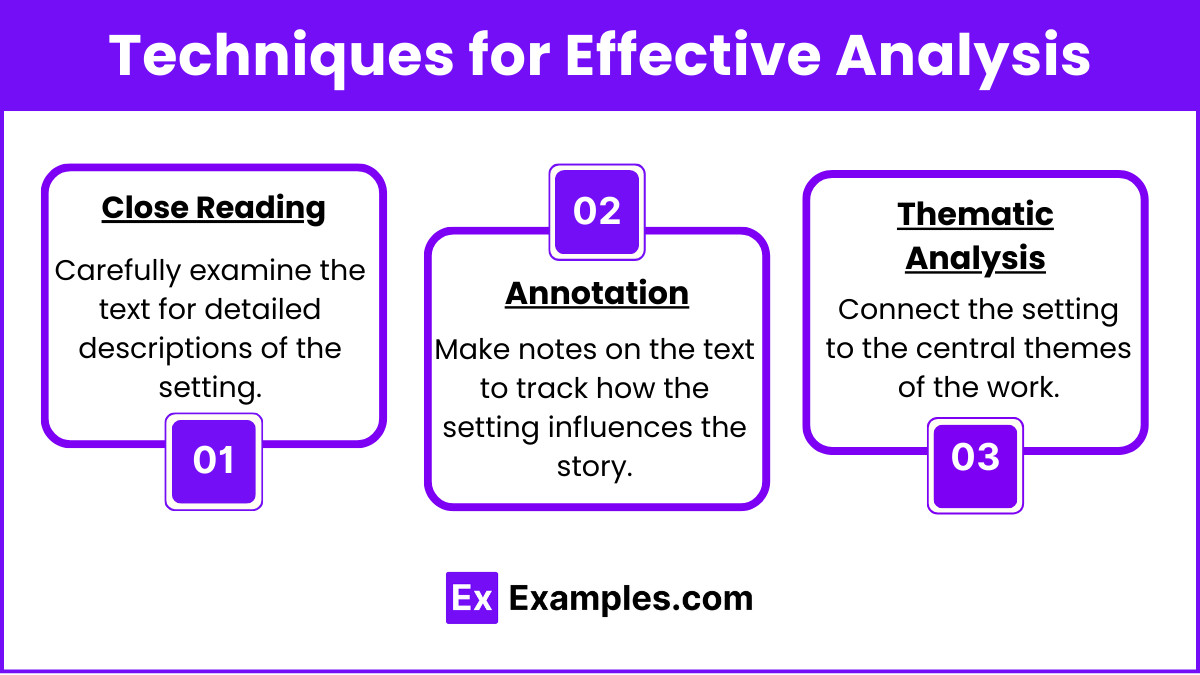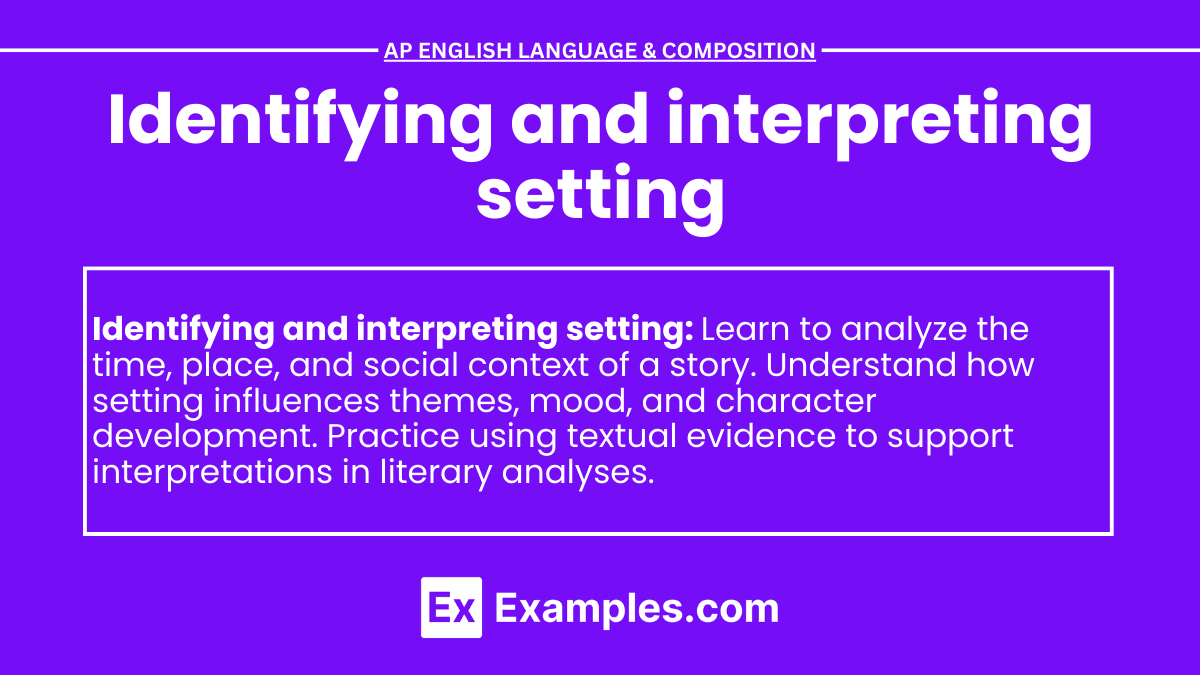In the AP English Language and Composition exam, identifying and interpreting the setting of a story is crucial for developing insightful and persuasive analyses. Whether engaged in argumentative writing or delivering an argumentative speech, understanding the time, place, and social context of a narrative allows you to use rhetorical sentences and cumulative sentences effectively. The setting provides the backdrop for the characters and plot, influencing the themes and mood of the story. By mastering this skill, you can create well-rounded arguments that enhance your literary critiques and engage your audience with deeper interpretations.
Learning Objectives
By studying the topic of identifying and interpreting setting, students will achieve several key learning objectives. They will enhance their critical thinking skills by analyzing the impact of time, place, and social context on a narrative. Students will learn to use cumulative sentences and rhetorical sentences to develop insightful analyses in explanatory essays and expository essays. They will also develop the ability to craft a strong final thesis statement that effectively incorporates their interpretations of the setting. Mastery of these techniques will enable students to produce well-structured, engaging, and persuasive literary analyses.
Understanding Setting

Definition
The setting is the environment in which a story takes place. It includes the geographical location, historical period, social context, and immediate surroundings.
Elements of Setting
- Time: The period in which the story occurs (past, present, future).
- Place: The geographical location and physical environment.
- Social Context: The cultural, social, and political environment.
- Mood and Atmosphere: The emotional tone and ambiance created by the setting.
Analyzing Setting

Techniques for Identifying Setting
- Descriptive Details: Look for specific descriptions of time, place, and environment.
- Example: “It was a dark and stormy night in the small village.”
- Historical References: Identify any historical events or periods mentioned.
- Example: “During the Great Depression…”
- Cultural Indicators: Note any cultural practices, language, or societal norms.
- Example: “The townspeople gathered for the annual harvest festival.”
Interpreting the Impact of Setting
- Theme Development: Analyze how the setting influences the themes of the story.
- Example: A dystopian setting might underscore themes of oppression and survival.
- Character Development: Consider how the setting shapes the characters’ actions and growth.
- Example: Growing up in a war-torn country might impact a character’s outlook on life.
- Plot Progression: Examine how the setting affects the events of the plot.
- Example: A harsh winter setting might create obstacles for the characters.
Techniques for Effective Analysis

Close Reading
- Definition: Carefully examine the text for detailed descriptions of the setting.
- Technique: Highlight or underline passages that describe the time, place, and social context.
Annotation
- Definition: Make notes on the text to track how the setting influences the story.
- Technique: Write comments in the margins about the significance of the setting in relation to the plot and characters.
Thematic Analysis
- Definition: Connect the setting to the central themes of the work.
- Technique: Identify how the environment reflects or contrasts with the themes.
Examples
Example 1: Analyzing Setting in “To Kill a Mockingbird”
- Time: 1930s during the Great Depression.
- Place: Maycomb, Alabama, a small Southern town.
- Social Context: Segregation and racial tension prevalent in the South.
- Impact on Themes: The setting highlights themes of racial injustice, moral growth, and empathy.
- Impact on Characters: Scout and Jem’s experiences are shaped by the prejudices and social norms of their community.
Example 2: Analyzing Setting in “1984”
- Time: A dystopian future.
- Place: Oceania, a totalitarian state.
- Social Context: Constant surveillance, propaganda, and government control.
- Impact on Themes: The setting emphasizes themes of control, freedom, and individuality.
- Impact on Characters: Winston’s rebellion and internal struggle are influenced by the oppressive environment.


